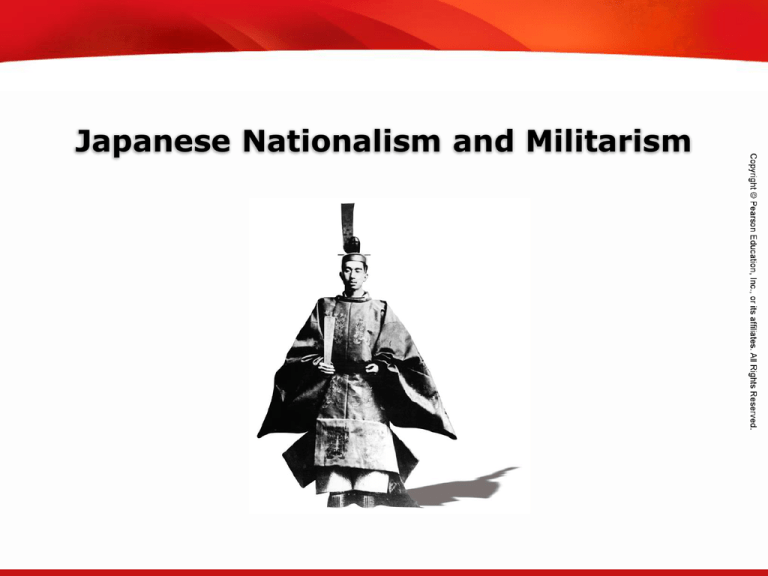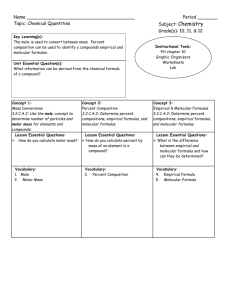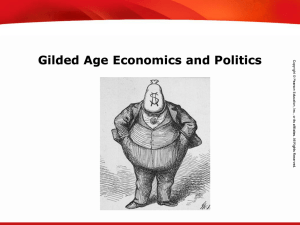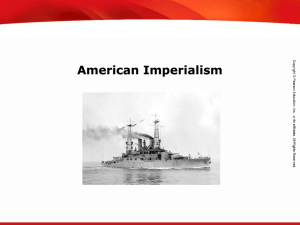Japanese Nationalism and Militarism
advertisement

TEKS 8C: Calculate percent composition and empirical and molecular formulas. Japanese Nationalism and Militarism TEKS 8C: Calculate percent composition and empirical and molecular formulas. Objectives • Explain the effects of liberal changes in Japan during the 1920s. • Analyze how nationalists reacted to Japan’s problems during the Great Depression. • Describe how the militarists embarked on a course of aggressive overseas expansion in the 1930s. TEKS 8C: Calculate percent composition and empirical and molecular formulas. Terms and People • Hirohito – the Japanese emperor who reigned from 1926 to 1989 • ultranationalist – an extreme nationalist • Manchuria – a northern Chinese province TEKS 8C: Calculate percent composition and empirical and molecular formulas. How did Japan change in the 1920s and 1930s? Japan used its strong economy to become an imperialist nation, expanding into China and Korea. The 1920s were a period of liberal reforms in Japan. By the 1930s, however, Japan experienced a backlash against liberalism due to the combined effects of the Great Depression and growing militarism. TEKS 8C: Calculate percent composition and empirical and molecular formulas. During World War I, Japan grew into a major economic and imperial power. Japan was a growing presence in East Asia. Japan: • Annexed Korea as a colony in 1910 • Sought further rights in China with the Twenty-One Demands • Was awarded former German possessions in East Asia by the Allies at the 1919 Paris Peace Conference TEKS 8C: Calculate percent composition and empirical and molecular formulas. In 1926, Hirohito became emperor of Japan. • According to Japanese tradition, he was the nation’s supreme authority and a living god. • He reigned for 63 years, until 1989. TEKS 8C: Calculate percent composition and empirical and molecular formulas. Japanese democracy during the 1920s was fairly liberal, but dominated by powerful business interests. Strengths • Political parties grew stronger. • Elected members of the Diet exercised their power. • All adult men won the right to vote. Weaknesses • Political parties were manipulated by the zaibatsu, Japan’s powerful business leaders. • Women did not win the right to vote until 1945. TEKS 8C: Calculate percent composition and empirical and molecular formulas. As Western powers grew wary of Japan’s aggressive growth, Japan agreed to slow down its foreign expansion. • Japan signed a 1922 agreement with the United States, Britain, and France to limit the size of its navy. • It also agreed to leave the Shandong province of China and to reduce its military spending. TEKS 8C: Calculate percent composition and empirical and molecular formulas. Japan experienced turmoil in many parts of its society during the 1920s. Economy • Rural peasants remained poor while the rest of the country prospered. • Factory workers were drawn to socialist ideas. Culture • Younger people adopted Western fashions and philosophies. • Conservatives blamed Western influences for the lack of obedience and respect for authority. Politics • Tensions grew between the government and the military. • Conservatives complained of government corruption and the influence of the zaibatsu. TEKS 8C: Calculate percent composition and empirical and molecular formulas. In 1923, an earthquake in the Tokyo area killed more than 100,000 people and caused major property damage and unemployment. As Tokyo began to recover, Japan faced another economic crisis: the Great Depression. Trade suffered and urban unemployment soared. Rural peasants were close to starvation. TEKS 8C: Calculate percent composition and empirical and molecular formulas. Military officials and ultranationalists blamed the Depression on Western influences. • They condemned politicians for agreeing to Western demands to stop overseas expansion. • They resented American laws that excluded Japanese immigrants. • They sought renewed expansion to provide Japan with the natural resources it needed to fuel its industries. TEKS 8C: Calculate percent composition and empirical and molecular formulas. In 1931, a group of Japanese army officers in the Chinese province of Manchuria pretended that the Chinese had attacked a Japanese-owned railroad line. Claiming selfdefense, the Japanese army attacked and conquered Manchuria. They then set up a puppet state. TEKS 8C: Calculate percent composition and empirical and molecular formulas. The League of Nations condemned Japan for invading Manchuria, but took no military action. • Japan withdrew from the League of Nations. • The Japanese army had not told the government of its plans. • Politicians were upset, but the Japanese people sided with the military. TEKS 8C: Calculate percent composition and empirical and molecular formulas. In the 1930s, ultranationalists plotted to overthrow the government. The unrest forced the government to accept military domination in 1937. Shifting focus to please the ultranationalists, the government: • Cracked down on socialists • Suppressed most democratic freedoms • Revived ancient warrior values • Built a cult around Emperor Hirohito • Used schools to teach students obedience and service TEKS 8C: Calculate percent composition and empirical and molecular formulas. Japan continued its course of overseas expansion. • The Japanese government nullified its agreement to limit the size of its navy. • Japan attacked China again in 1937, starting the Second Sino-Japanese War. • World War II broke out in Europe in 1939. The following year, Japan signed the Tripartite Pact with Germany and Italy, cementing the alliance known as the Axis Powers.



